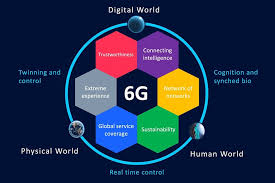WRC 19: Key Insights from the 2019 World Radiocommunication Conference
telcomatraining.com – The World Radiocommunication Conference 2019 (WRC-19) marked a pivotal moment for the global telecommunications industry, bringing together stakeholders from governments, international organizations, and private sectors to shape the future of spectrum management and radiocommunication policies. Held in Sharm El-Sheikh, Egypt, from October 28 to November 22, this quadrennial event addressed critical issues, ranging from spectrum allocation for 5G networks to satellite technologies and beyond. Below, we explore the key insights from WRC-19 that continue to influence the industry.
1. Spectrum Allocation for 5G Development
One of the most anticipated topics at WRC-19 was the allocation of spectrum for fifth-generation (5G) networks. The conference successfully identified several frequency bands for International Mobile Telecommunications (IMT), particularly in the millimeter-wave spectrum. Bands such as 24.25–27.5 GHz, 37–43.5 GHz, and 66–71 GHz were designated to support the rollout of 5G. These allocations aimed to meet the growing demand for high-speed, low-latency connectivity, which is essential for applications such as autonomous vehicles, smart cities, and industrial automation.
By harmonizing these frequency bands globally, WRC-19 laid the foundation for international cooperation and interoperability, enabling manufacturers and operators to reduce costs and accelerate the adoption of 5G technologies.
2. Spectrum for Satellite Communications
WRC-19 also addressed the rising demand for satellite-based communication systems. With the growing popularity of low Earth orbit (LEO) satellite constellations for broadband internet services, the conference focused on ensuring sufficient spectrum for satellite operators while minimizing interference with terrestrial networks. Notably, the 50.4–51.4 GHz band was identified for high-altitude platform systems (HAPS), which can complement satellites in providing internet access to underserved areas.
This decision reinforced the importance of satellites in bridging the digital divide, particularly in remote and rural regions where terrestrial infrastructure is challenging to deploy.
3. Enhancing Maritime and Aeronautical Communications
The conference also made significant strides in maritime and aeronautical communication systems. New regulations were adopted to improve the safety and efficiency of these sectors. For instance, WRC-19 expanded the allocation of spectrum for Global Maritime Distress and Safety Systems (GMDSS) to include additional frequencies, ensuring better coverage for emergency communications.
Similarly, updates to the frequency bands used for aeronautical mobile systems supported advancements in air traffic management, enhancing flight safety and efficiency in increasingly crowded skies.
4. Resolving Spectrum Sharing Challenges
Balancing the needs of different spectrum users was a recurring theme at WRC-19. The conference introduced mechanisms to facilitate coexistence between various services, such as 5G networks, satellite systems, and fixed wireless access. This involved updating regulations to reduce interference and establish clear guidelines for spectrum sharing.
The emphasis on collaboration between stakeholders highlighted the importance of equitable spectrum management in maximizing the utility of finite resources.
5. Environmental Considerations and Sustainability
WRC-19 also took steps to address the environmental impact of radiocommunication systems. The conference emphasized the need for sustainable practices in the deployment of infrastructure, such as energy-efficient base stations and environmentally friendly satellite manufacturing. While this was not a central theme, it underscored a growing awareness of the industry’s responsibility toward global sustainability goals.
6. The Path to WRC-23 and Beyond
The outcomes of WRC-19 set the stage for discussions at future conferences, particularly WRC-23. Issues such as the further allocation of spectrum for IMT and satellite services, as well as the integration of emerging technologies like the Internet of Things (IoT) and artificial intelligence (AI), will likely dominate the agenda. The decisions made in 2019 provide a roadmap for addressing these challenges while fostering innovation and growth.
Conclusion
WRC-19 was a landmark event that shaped the trajectory of global radiocommunication policies. By addressing key issues such as 5G spectrum allocation, satellite communications, and sustainable practices, the conference laid a robust foundation for technological progress. As the world prepares for WRC-23 and beyond, the insights gained from WRC-19 remain a critical reference for policymakers and industry leaders alike.







